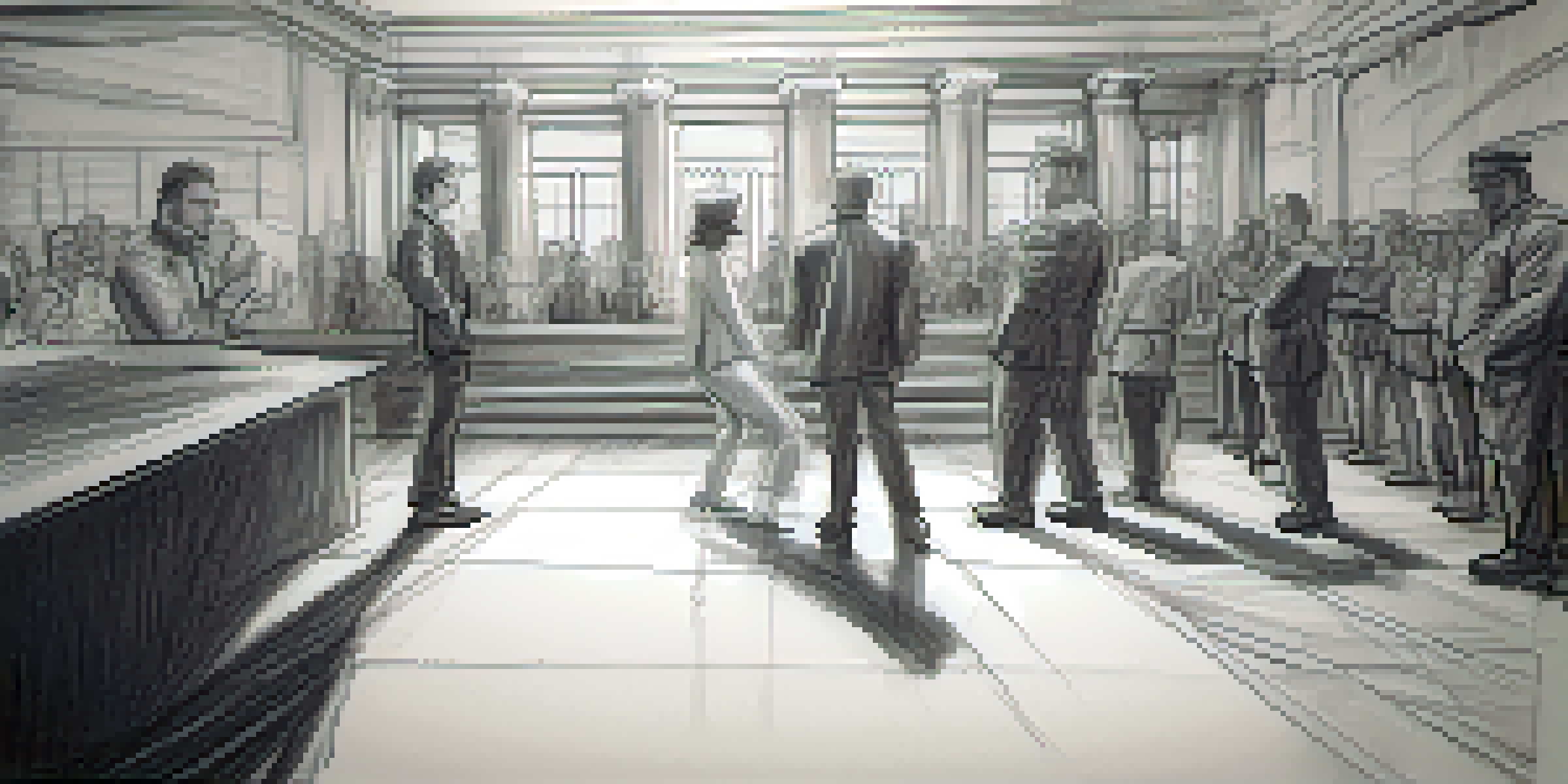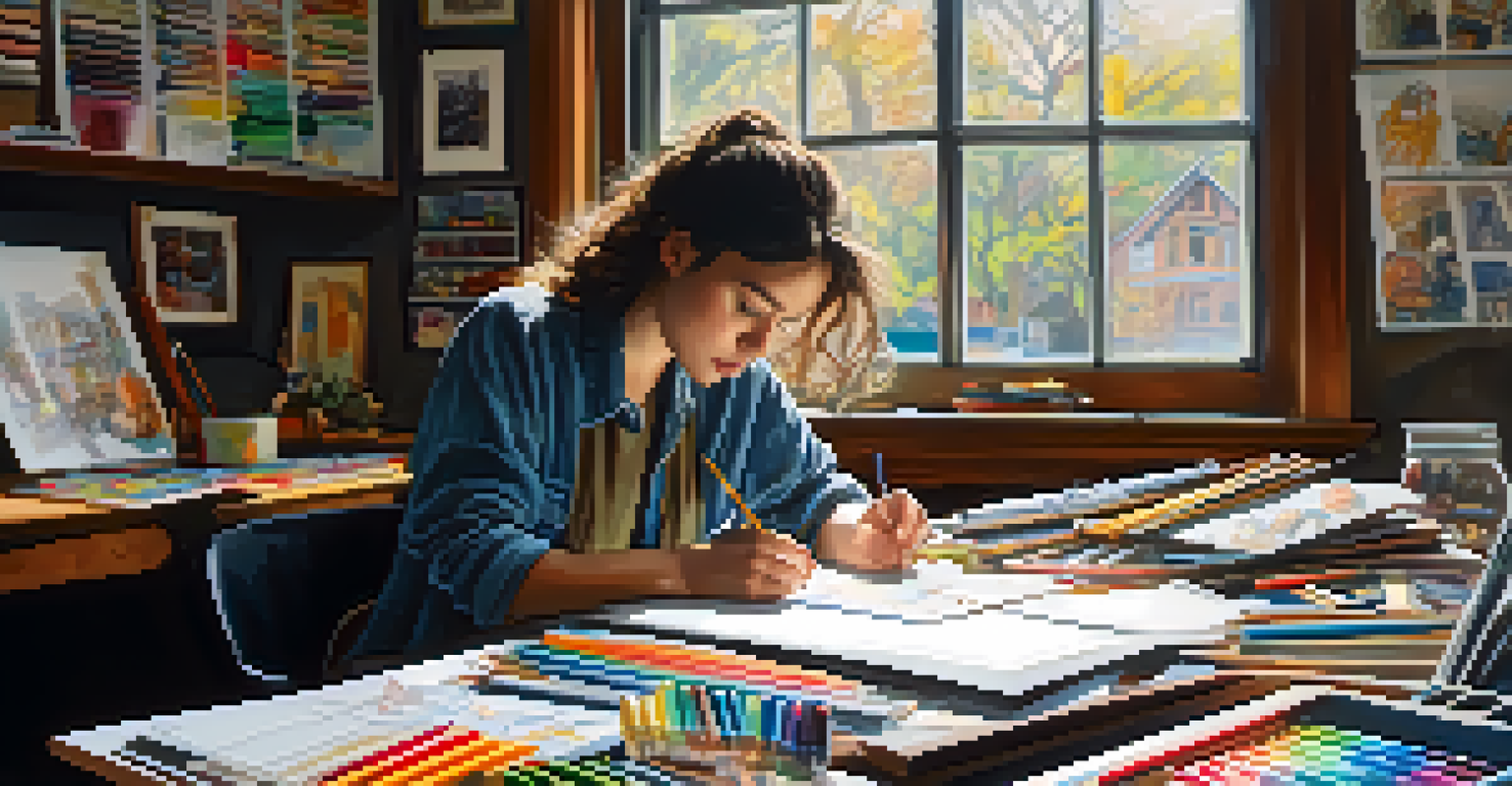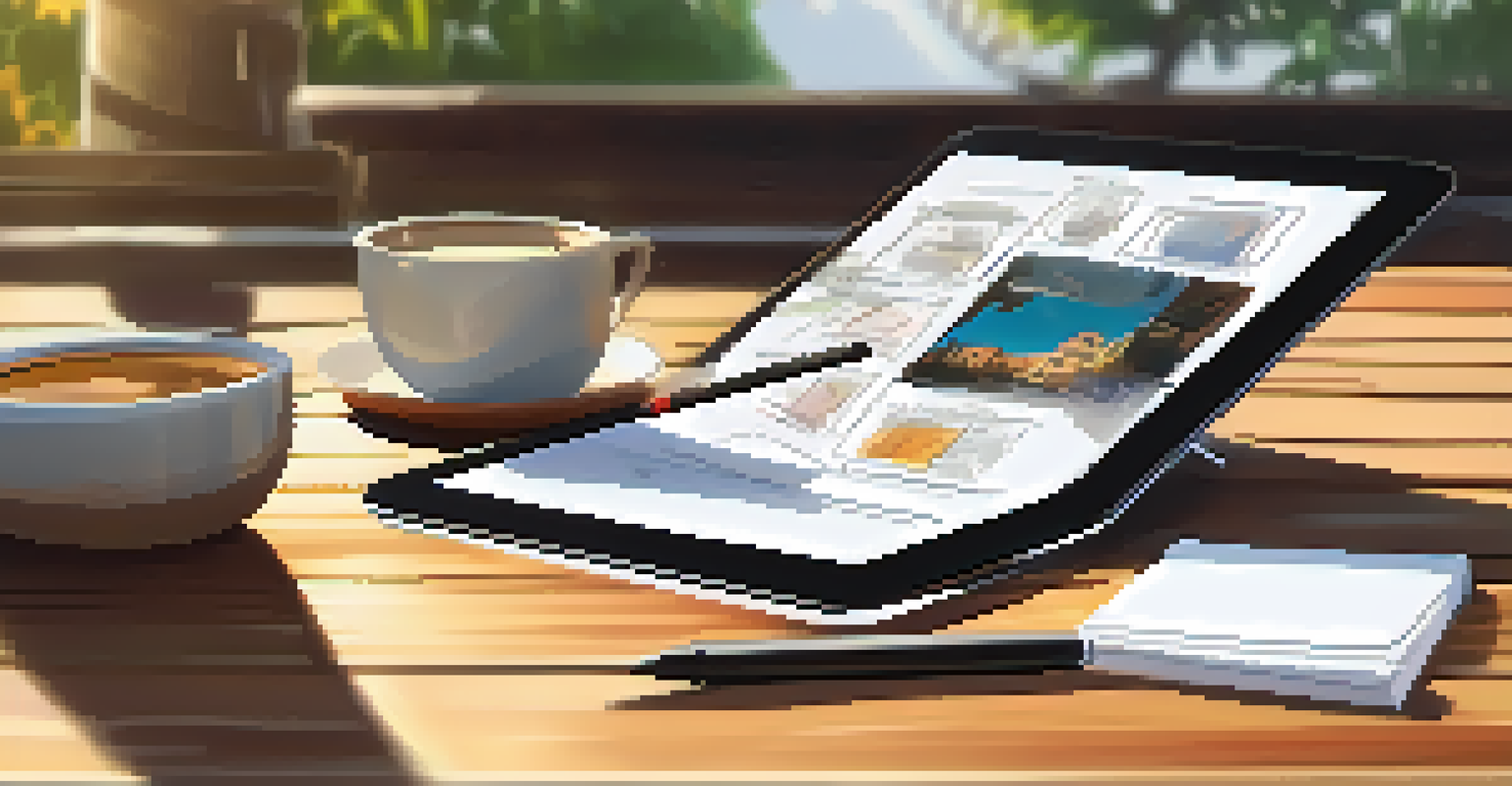Visualizing Your Film: The Importance of Storyboarding

Understanding Storyboarding: What It Is and Why It Matters
Storyboarding is the process of sketching out scenes in a sequence, visually mapping the narrative of your film. Each frame acts like a comic strip, showing how the story unfolds scene by scene. This method allows filmmakers to visualize their ideas before the actual shooting begins, making it easier to spot potential issues early on.
A storyboard is a visual representation of your film's narrative; it breathes life into the script and guides the entire production process.
Imagine trying to assemble a complex puzzle without having the picture on the box to guide you. That’s what filmmaking can feel like without a storyboard. By having a visual representation of your film, you can better organize your thoughts and ensure that each element aligns with your vision.
Moreover, storyboarding serves as a communication tool among your team. It helps everyone—from the director to the cinematographer—understand the film's direction, ensuring that everyone is on the same page and working towards a shared goal.
Enhancing Visual Storytelling Through Storyboarding
Visual storytelling is about conveying emotions and themes through imagery, and storyboarding is a crucial step in that process. By sketching out each shot, you can consider how lighting, angles, and framing can enhance the emotional impact of your scenes. For instance, a close-up can convey intimacy, while a wide shot can express isolation.

Additionally, storyboarding allows you to experiment with different visual styles and techniques. It’s like a rehearsal for your visuals, where you can play around with compositions before committing to them in production. This exploration can lead to creative discoveries that might not have been evident initially.
Storyboarding Enhances Filmmaking
Storyboarding visually maps out scenes, helping filmmakers organize their thoughts and communicate their vision effectively.
Ultimately, storyboarding gives you the freedom to visualize your film fully, making it easier to identify the most effective ways to tell your story visually. This process not only enhances your narrative but also elevates the overall quality of the film.
Saving Time and Resources with Effective Storyboarding
Time is money in filmmaking, and storyboarding can significantly reduce both. By pre-visualizing your film, you can identify potential logistical challenges before shooting begins. For example, if a scene requires an elaborate setup, spotting this early can save you from costly last-minute changes.
Filmmaking is a collaborative process, and a well-crafted storyboard serves as the foundation for effective communication among the team.
Moreover, a well-crafted storyboard can streamline your shooting schedule. With a clear visual plan, the crew can work more efficiently, knowing exactly what shots are needed and how to achieve them. This organization minimizes downtime and helps maintain momentum throughout the filming process.
In essence, investing time in storyboarding pays off during production, allowing you to maximize your resources while minimizing stress. It’s a proactive approach that leads to a smoother, more enjoyable filmmaking experience.
Bridging the Gap Between Script and Screen
A script is just words on a page, but storyboarding bridges the gap between those words and the visual narrative you want to create. It allows filmmakers to translate dialogue and action into a visual format, making the story more tangible. This transition is crucial in understanding how the script will play out on screen.
For example, consider a scene with a dramatic confrontation. Through storyboarding, you can plan the visual dynamics, such as character positioning and camera movements, to intensify the moment. This strategic planning helps capture the intended emotions and themes more effectively.
Saves Time and Resources
Effective storyboarding identifies logistical challenges early, streamlining the shooting schedule and reducing costly changes.
By using storyboards as a blueprint, filmmakers can ensure that every visual choice aligns with the script’s intentions, leading to a richer narrative experience. This alignment is key to creating a cohesive film that resonates with audiences.
Collaboration and Communication Through Storyboarding
Filmmaking is inherently collaborative, and storyboarding plays a vital role in fostering effective communication among team members. By sharing storyboards, directors can convey their vision to the cast and crew, allowing everyone to contribute their ideas and expertise. This collaborative atmosphere can lead to innovative solutions and creative insights.
Furthermore, visual aids can help clarify complex ideas that might be challenging to communicate through words alone. For instance, showing a storyboard of an action sequence can better illustrate the intended pacing and movement than simply describing it. This clarity can enhance the team's overall understanding and execution.
Ultimately, storyboarding creates a shared language that unites the team, making it easier to collaborate and bring the vision to life. This synergy is essential for crafting a successful film that reflects the collective effort of everyone involved.
Adapting Storyboards: Flexibility in Filmmaking
While storyboards provide a solid foundation for your film, it’s essential to remain flexible during the filmmaking process. Sometimes, the magic happens spontaneously on set, and you may find that your original plan needs adjusting. Being open to change allows you to capture unexpected moments that can elevate your story.
For instance, if an actor delivers an unexpected performance that changes the tone of a scene, adapting your storyboard can help you maximize that moment. This adaptability not only enhances the film but also creates a more authentic experience for the audience.
Fosters Team Collaboration
Storyboarding creates a shared visual language that enhances communication and collaboration among the cast and crew.
In the end, storyboarding should serve as a guide rather than a rigid blueprint. Embracing flexibility ensures that you can respond to the creative flow of filmmaking, ultimately leading to a more dynamic and engaging final product.
Tools and Techniques for Effective Storyboarding
There are various tools and techniques available for creating effective storyboards, ranging from traditional pencil and paper to digital software. Many filmmakers prefer digital tools because they offer flexibility and easy modifications. Programs like Storyboard Pro or Canva provide templates and features that simplify the process.
However, you don’t need fancy software to create a storyboard. Simple sketches or even a series of photographs can serve the same purpose. The key is to capture the essence of each scene and communicate your vision clearly. Think of it as a visual brainstorming session where ideas can flow freely.

Ultimately, the choice of tools depends on your personal preference and workflow. Whether you prefer the tactile feel of paper or the convenience of digital platforms, what matters is that you find a method that helps you effectively visualize your film.